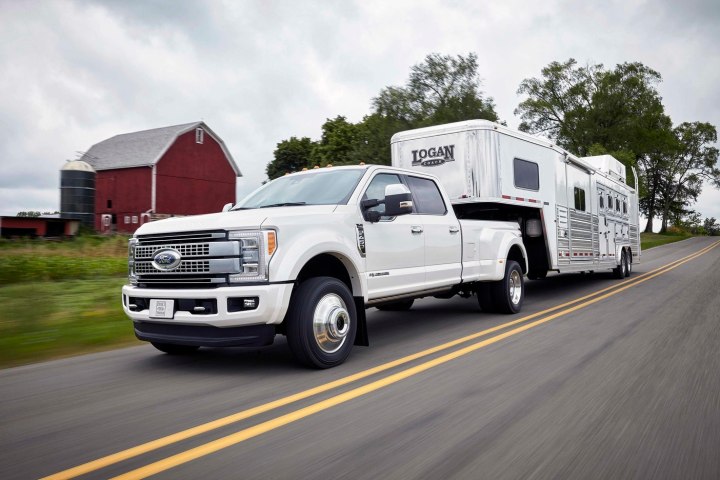
Read more: We’ll drink to that! Ford and Jose Cuervo want to turn agave plants into car parts
Ford has officially revealed specs for the 2017 model year Super Duty, and the lineup’s towing and hauling capabilities have been significantly ramped up. For example, the F-450 now features a maximum gooseneck towing capacity of 32,500 pounds, and its fifth-wheel and conventional towing ratings have been boosted to 27,500 lbs. and 21,000 lbs. respectively. In addition, the truck boasts a maximum payload weight of 7,630 lbs., which makes the Super Duty the undisputed hauling king.

Just how did Ford accomplish this? There are a variety of factors at play, but let’s start with the simple stuff — the body and frame. Just like the F-150, the Super Duty lineup wears a military-grade aluminum alloy body that cuts weight by up to 350 lbs. This allowed the brand to bolster the fully-boxed frame, which features 95 percent high-strength steel and is 24 times stiffer than its predecessor.
The engines have been significantly beefed up as well. The 6.7-liter V8 that comes standard on all Super Duty diesel trucks now makes 440 horsepower and an outstanding 925 pound-feet of torque, which may well be enough power to move a house. The 6.8-liter gasoline V8 also offers 385 hp and a best-in-class torque rating of 430 lb-ft.

It’s the Super Duty’s tech, however, that really brings it all together. The truck equips adaptive cruise control for effortless freeway towing, and its collision-warning system is optimized for big payloads with trailer-brake advisories. It also offers a variety of camera systems that provide views into the cargo box, behind the trailer, and all around the vehicle with 360-degree support.
Pricing info for the 2017 Super Duty range will be published near the truck’s on-sale date toward the end of the year.
Editors' Recommendations
- Watch Ford’s robot test drivers take a car for an on-the-spot spin
- Ford’s Emoji Jacket for cyclists aims to foster harmony among road users
- 2020 Ford F-Series Super Duty has the torque to tow all of your toys


